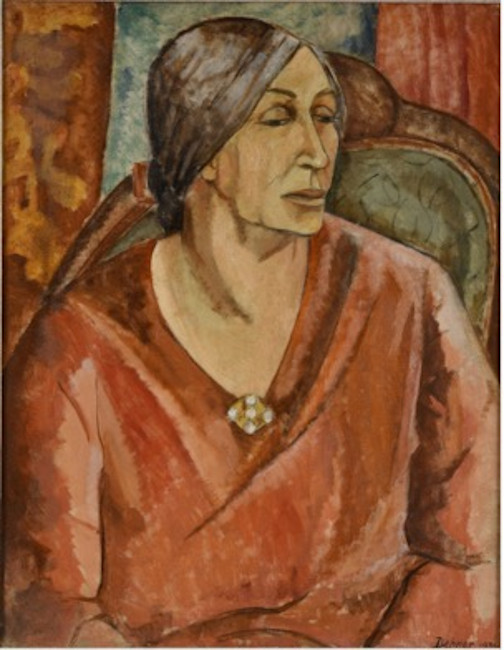Highlights from the Art World: 1960s New York, Eva Hesse, American Modernism

New York: 1962-1964
The Jewish Museum
(Through January 8, 2023)
It may be hard to believe that just three years could change forever how artists in New York City (and much of the public as well) looked at and responded to their world. But that’s exactly what happened. And nothing in the culture has been the same since.
The Jewish Museum’s current exhibition takes visitors on a heady, whirlwind tour of the times, from videos of Walter Cronkite’s announcement of President Kennedy’s assassination to James Baldwin’s TV diabtribes with the philosopher of the day. There are set pieces to stumble upon, with Danish armchairs and plastic ashtrays placed in front of a black-and-white TV playing The Munsters, that evil family of witches that look pretty benign by today’s standards. Life magazine covers and poetry journals celebrating the likes of Frank O’Hara and Ed Sanders proliferate and wallpaper kitschy enough to put a smile on even the most erudite in the crowd. And in the midst of it all, there’s the art. Painters, sculptors, dancers, filmmakers and poets jumped into the fray to make sense of it all.
Particularly eye-catching is a 72”x60” painting by Marjorie Strider, entitled Girl with Radish (1963). It’s a mouth-watering entry that proves at least one pop female artist of the day could hold her own with the Big Boys. This is a not-to-be-missed show.


Eva Hesse: Expanded Expansion
The Guggenheim Museum of Art
(Through October 16, 2022)
“Life doesn’t last; art doesn’t last. It doesn’t matter.” Those words, spoken by the pioneering post-minimalist German-American sculptor Eva Hesse, define what makes the exhibition of her 1969 work at the Guggenheim resonate in the mind long after leaving the installation.
Ten feet high, this monumental piece of rubberized cheesecloth panels, connected by rigid fiberglass and polyester resin poles forming “legs,” was first mounted by the Whitney Museum in 1969. Its current showing is a tribute to an artist who consistently thought “outside the box” -- taking materials from an abandoned factory in Germany and wielding them into soft and hard combinations that defied the logical parameters of geometric sculpture. The exhibition includes journals and an informative video that demonstrate the care that the conservators have taken to preserve a fading work that begs the question ‘should art last?’ Hesse died of a brain tumor at 34, much too soon for such a visionary, but someone who understood the transitory nature of everything.


“To Live Is To Paint” Wilhelmina Weber Furlong, Dorothy Dehner and American Modernism
Phyllis Harriman Mason Gallery, The Art Students League
(Through August 23, 2022)
Often the single career of a particular artist is overshadowed by the times and circumstances of life itself. That could be said of post-impressionist painter Wilhelmina Weber Furlong (1878-1962) and modernist painter and sculptor Dorothy Dehner (1901-1994). What happened instead for these two enormously talented women and long-time friends was a synergy of creative work that still stands as a testament to modernism and abstraction today. It was through such associations and brave leaps that abstraction began to percolate and ultimately change the way we look at art today.
Furlong and Dehner met at the Art Students League in 1925 and found an instant commonality of interests. Furlong and her husband Tomas (whom she had met while working in Mexico City as a translator for President Porfirio Diaz) mentored Dehner and others, hosting them at their Lake George retreat. Dehner’s early marriage to artist David Smith was a partnership that lasted until 1950, when she left that bucolic natural world for good. The work on display speaks volumes of artistic resilience. It gives me great pleasure that even if some readers do not get to view such an exhibit, perhaps they will make a note of such underrated talents.

Author Bio:
Sandra Bertrand is Highbrow Magazine’s chief art critic.
For Highbrow Magazine
Image Sources:
--Sandra Bertrand
--Wallygva (Wikimedia, Creative Commons)































































































































































































































































































































